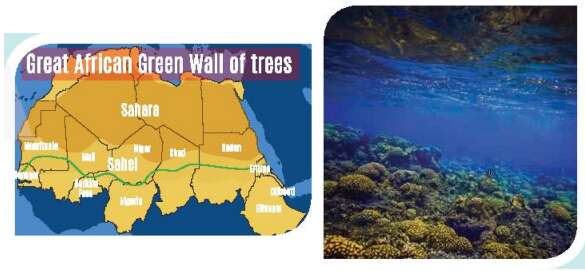Câu hỏi:
97 lượt xemEveryday English 2
Work in pairs. Use the model in 1 to make similar conversations for these situations. One of you is Student A, the other is Student B. Use the expressions below to help you.
(Làm việc theo cặp. Sử dụng mô hình Trong 1 để thực hiện các hội thoại tương tự cho các tình huống này. Một trong số các bạn là Học sinh A, người kia là Học sinh B. Sử dụng các biểu thức dưới đây để giúp bạn.)
1. Student A is talking about the activities he/she does on field trips to national parks. Student B expresses likes/dislikes about these activities.
(Học sinh A đang nói về các hoạt động mà em ấy thực hiện trong các chuyến đi thực tế đến các công viên quốc gia. Học sinh B bày tỏ sự thích/không thích về các hoạt động này.)
2. Student A and Student B are planning an eco-friendly class party. They talk about the things and activities they like or dislike at a party.
(Học sinh A và học sinh B đang lên kế hoạch tổ chức một bữa tiệc lớp thân thiện với môi trường. Họ nói về những điều và hoạt động mà họ thích hoặc không thích tại một bữa tiệc.)
Lời giải
Hướng dẫn giải:
1.
A: When we go on field trips to national parks, we always go hiking. It's my favorite activity.
(Khi chúng tôi đi thực địa đến các công viên quốc gia, chúng tôi luôn đi bộ đường dài. Đó là hoạt động yêu thích của tôi.)
B: I really love hiking. It's such a great way to explore the park.
(Tôi thực sự thích đi bộ đường dài. Đó là một cách tuyệt vời để khám phá công viên.)
A: We also do birdwatching, which I think is fun.
(Chúng tôi cũng xem chim, điều mà tôi nghĩ là thú vị.)
B: I'm not a fan of birdwatching. It's a bit boring for me.
(Tôi không thích ngắm chim. Đó là một chút nhàm chán đối với tôi.)
A: Another activity we do is camping. It's a great way to connect with nature.
(Một hoạt động khác mà chúng tôi làm là cắm trại. Đó là một cách tuyệt vời để kết nối với thiên nhiên.)
B: I can't stand camping. It's uncomfortable and I don't like sleeping outdoors.
(Tôi không thể cắm trại. Thật khó chịu và tôi không thích ngủ ngoài trời.)
2.
A: Let's plan an eco-friendly class party. We could have everyone bring their own reusable plates and cups.
(Hãy lên kế hoạch tổ chức một bữa tiệc trong lớp thân thiện với môi trường. Chúng ta có thể yêu cầu mọi người mang theo đĩa và cốc có thể tái sử dụng của riêng mình.)
B: I really love that idea. It's so important to reduce waste.
(Tôi thực sự thích ý tưởng đó. Nó rất quan trọng để giảm chất thải.)
A: We could also have a vegetarian potluck instead of ordering food.
(Chúng ta cũng có thể ăn lẩu chay thay vì gọi đồ ăn.)
B: I can't stand the idea of a vegetarian potluck. I love meat and wouldn't enjoy the food.
(Tôi không thể chịu được ý tưởng về một bữa tiệc thịnh soạn dành cho người ăn chay. Tôi yêu thịt và sẽ không thưởng thức các món ăn.)
A: How about instead of balloons, we have paper decorations that can be recycled?
(Thay vì bóng bay, chúng ta có đồ trang trí bằng giấy có thể tái chế thì sao?)
B: I really love that idea too. Balloons are fun but they create a lot of waste.
(Tôi cũng rất thích ý tưởng đó. Bóng bay rất thú vị nhưng chúng tạo ra rất nhiều rác thải.)
Everyday English 1
Expressing likes and dislikes
(Thể hiện sự thích và không thích)
Listen and complete the conversation with the expressions in the box. Then practise it in pairs.
(Nghe và hoàn thành cuộc hội thoại với các biểu thức trong hộp. Sau đó thực hành nó theo cặp.)
A. I can’t stand (Tôi không thể chịu được)
B. I really love (Tôi thật sự thích)
C. I'm not a fan (Tôi không phải là người hâm mộ của)
Alice: There’re so many activities for visitors in this park. Do you fancy going on an elephant ride, Mai?
Mai: No, thanks. (1) _____________ of elephant rides.
Alice: Don't you like elephants? They are very gentle creatures.
Mai: That's why we shouldn't ride on them. (2) _____________ animal cruelty.
Alice: Yes, you're right. Perhaps we should learn more about the birds in the park.
Mai: Good idea! (3) _____________ bird-watching.
CLIL 1
Read the text and tick (✓) the correct project in the table.
(Đọc văn bản và đánh dấu (✓) vào dự án đúng trong bảng.)
PROTECTING ECOSYSTEMS - IDEAS FROM AROUND THE WORLD
The healthier our ecosystems are, the healthier our planet and its people become. Ecosystem restoration can help end poverty, fight climate change, and prevent loss of flora and fauna on every continent and in every ocean. Below are two examples of successful ecological projects.
The Great Green Wall
The goal of this project is to create the largest living structure on the planet. The plan is to restore 100 million hectares of damaged land, limit the amount of carbon dioxide and create 10 million green jobs in Africa. This will provide rich land, food security, and improve the region’s ability to deal with climate change. Since its launch in 2007, Ethiopia and Nigeria have restored millions of hectares of land, and Senegal has planted more than 10 million trees.
Belize Barrier Reef
The Belize Barrier Reef was once described as the most amazing reef in the West Indies. It is home to a large diversity of plants and animals. Itis Belize’s top tourist destination, popular for scuba diving and snorkelling, and a UNESCO Natural World Heritage Site. Between 2009 and 2018, it was declared endangered because of pollution and the destruction of its ecosystems. However, because of conservation efforts, a large part of the reef is now protected. There are seven marine reserves. Belize has also stopped oil drilling near the Barrier Reef, banned plastic products, and created ‘no-take zones’, where removing plants and animals is not allowed.

|
|
The Great Green Wall |
Belize Barrier Reef |
|
1. It is a marine ecosystem of rich biodiversity. |
|
|
|
2. Its aim is to build the world’s biggest living structure. |
|
|
|
3. Millions of trees have been planted in several African countries. |
|
|
|
4. The government has taken measures to restore and protect the ecosystem |
|
|
